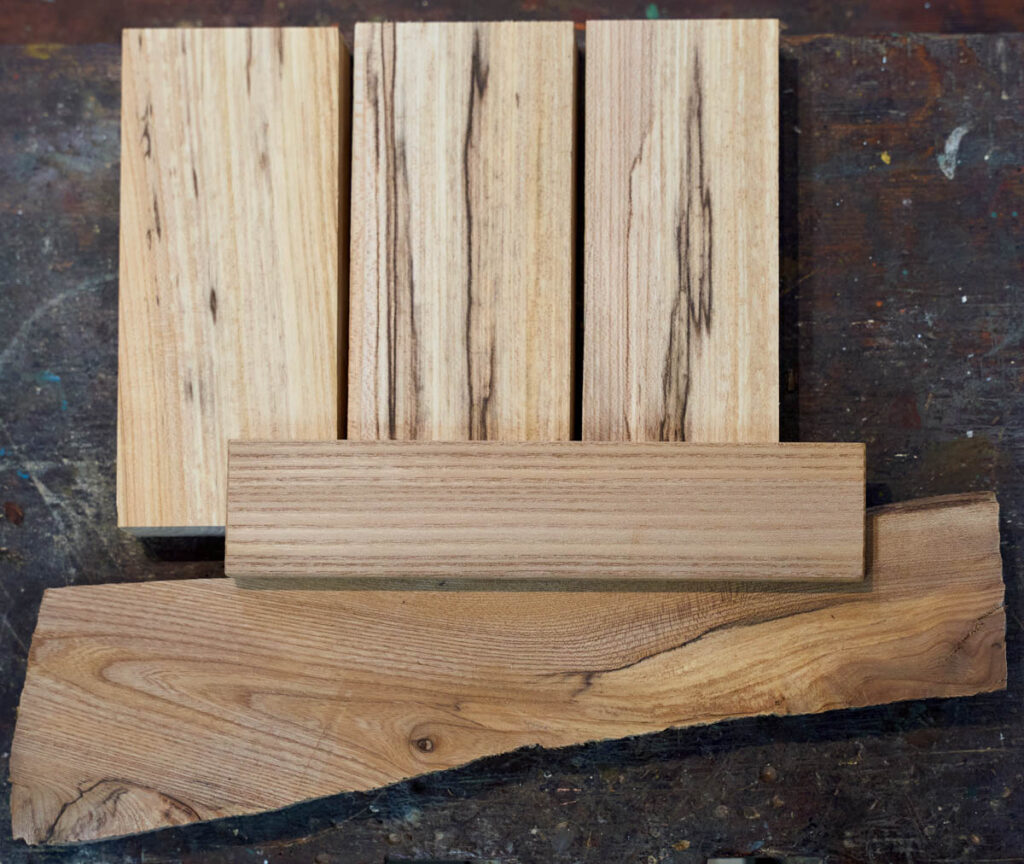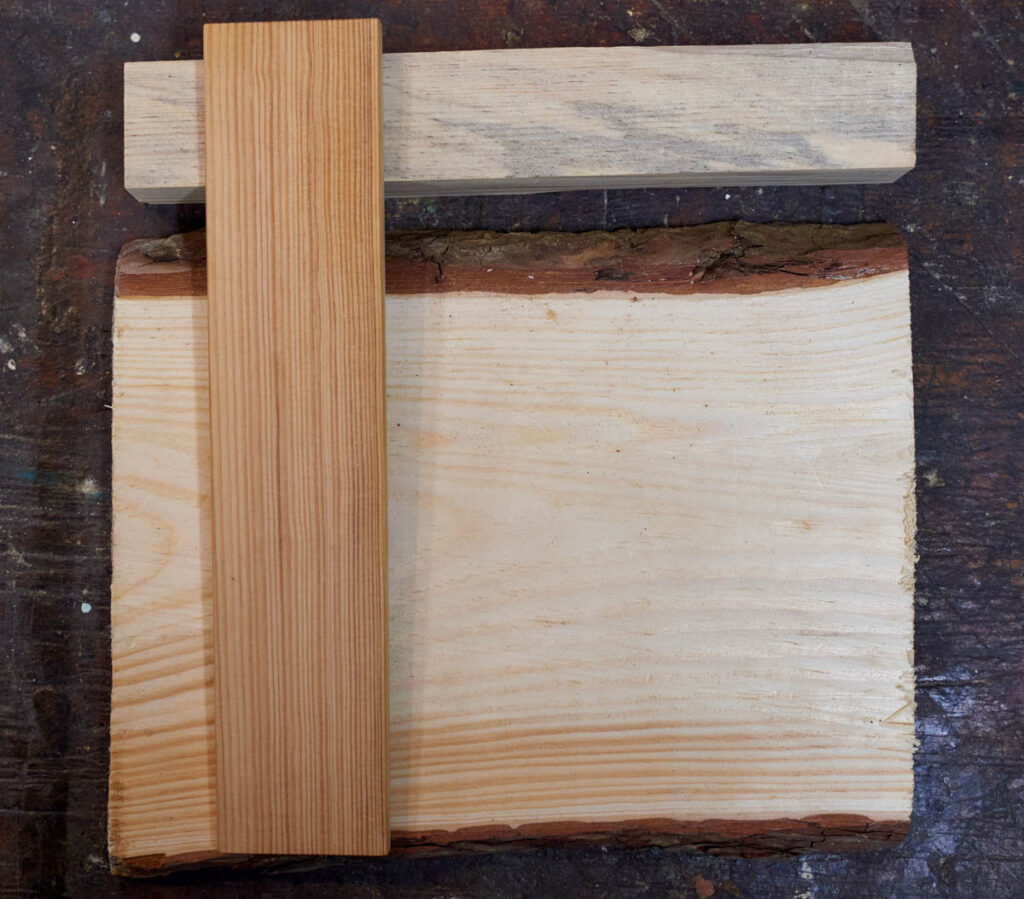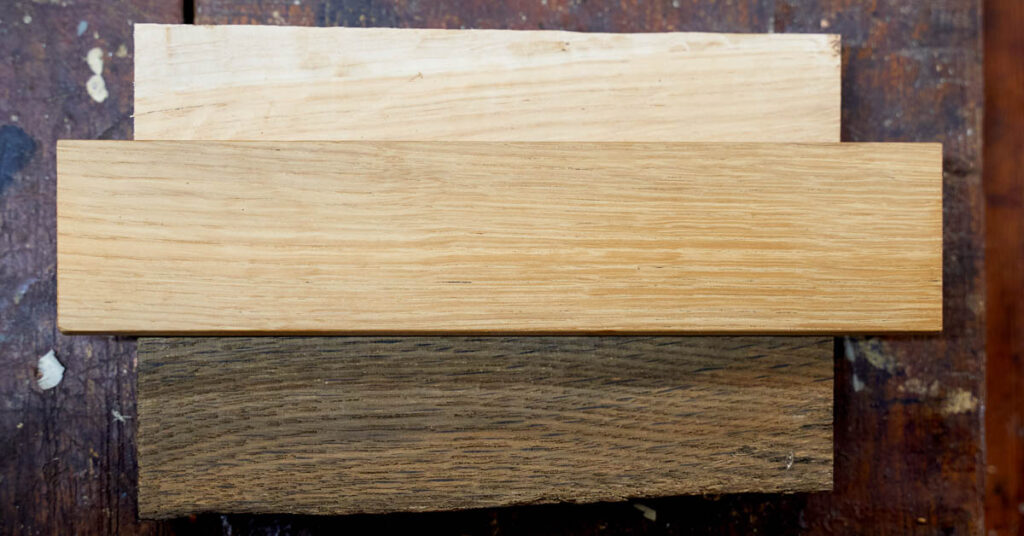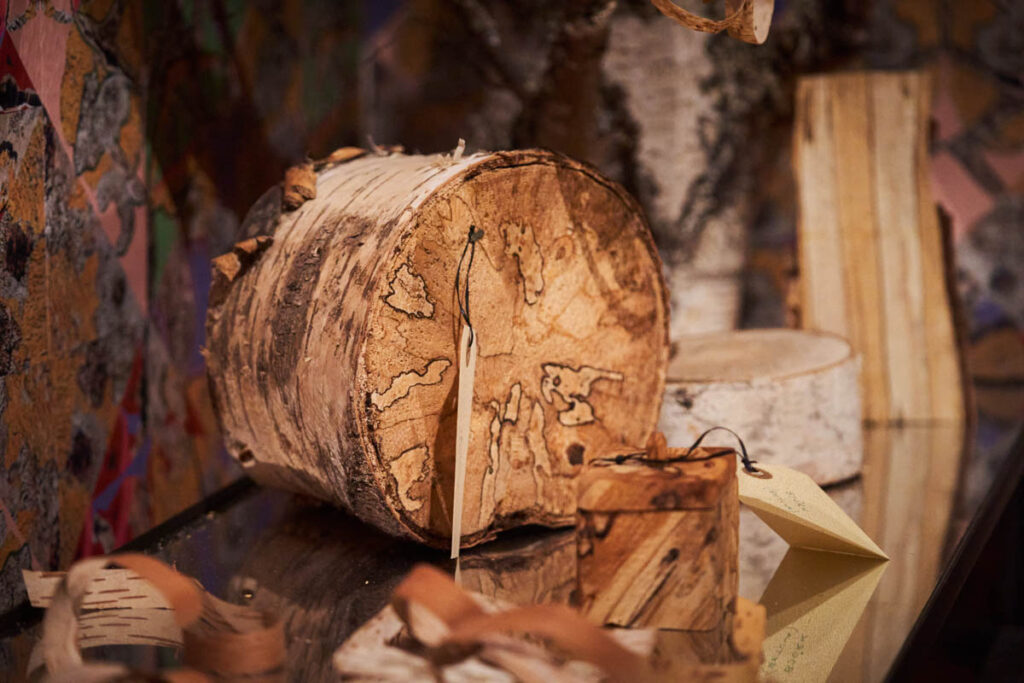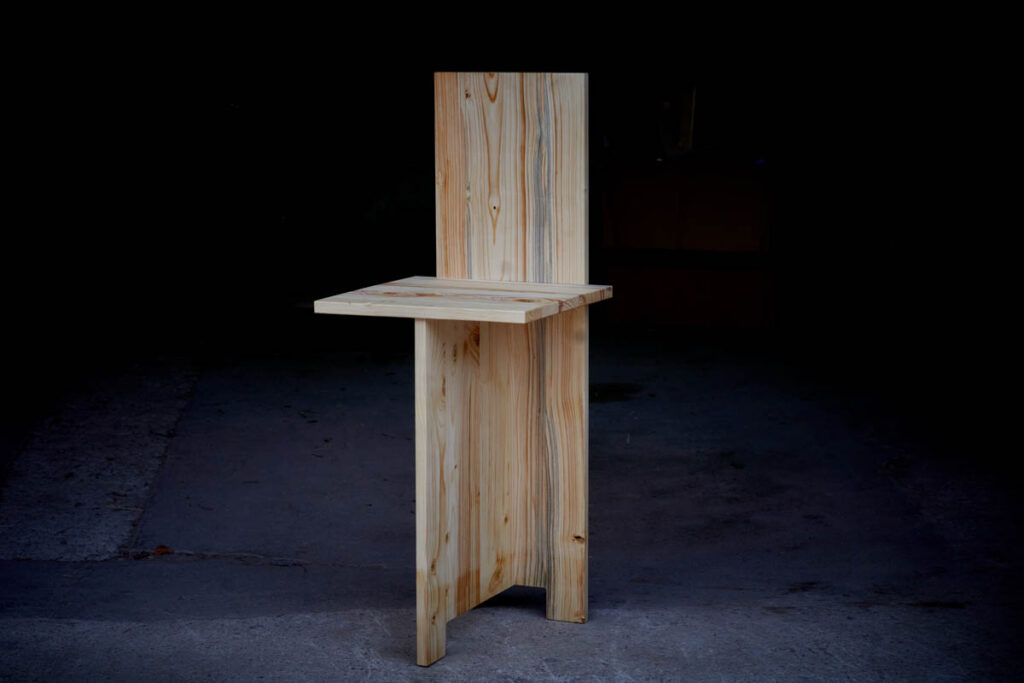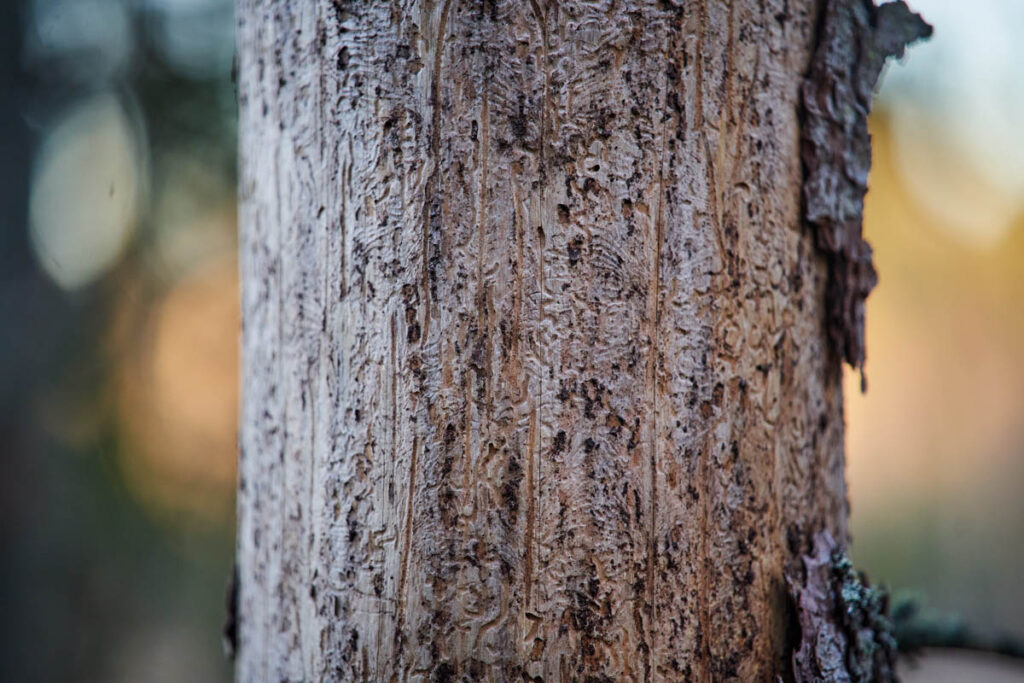MADAM Snickeri celebrate the wood that the industry rejects, finding beauty in the stains, holes and deformities.
Today we have our carpentry workshop in a road barn in Sankt Anna. It is a village that is important in our practice, here we form collaborations at the same time as we want to contribute to the village through our carpentry. With the knowledge of materials, creativity and a strong belief in the knowledge of the hand, we find sustainable opportunities in our various assignments and projects.

Sustainability is always in focus, which leads us to constantly reconsider ingrained notions that we encounter in our everyday lives. Through solid craftsmanship, we are trying to challenge an industrial way of looking at wood and making historic structures visible.
When forestry began to be industrialized in the latter half of 1800, it was also required that the wood become more predictable. Therefore, standards were introduced for what would be classified as “quality wood”.
Through standardization, the “fine” or “approved” timber would be selected for the growing timber market.
These standards in the forest industry have led to the lumber in the board yards, as well as furniture and objects made from wood, often having a uniform appearance that does not reflect the varied, rich life of the forest.
Craftsmen have always made use of special trees and wood that deviated from the norm. Now we want to take that knowledge and aesthetic look into carpentry and industries.
In a collaboration between Artist in Residence Linnaeus University, Virserum’s art gallery and Lära om arkivet (Learn of the archive), we have had a residency where we worked on the project Tack Skogen! 2.0 (Thank you Forest!).
We live in a time where we have to economize with the resources we have, use everything and think twice. That’s why the project Tack Skogen! 2.0 was initiated, a field artistic research study around damaged wood.
When the forest is turned into a product, some are filtered out, such as trees that may have grown crookedly, have been bruised or have grown too coarsely. They do not fit into the norm of timber handling standardization, the foundation of which was laid during the industrialization of the nineteenth century. It is with this discarded timber, so-called damaged wood, that we create objects, where the damage can be in focus.
It has been about seeing, understanding and showing the variations that the wood from our Swedish forests gives. Investigating what can be used, challenging norms and visualizing the uniqueness of each wood species: to use as much of it as possible for the sake of the future.
- Birch in its different shapes
- Elm in its different shapes
- Pine in its different shapes
- Oak in its different shapes
In Tack Skogen! we start from the wood classified as damaged. We want to invite you to expand the visual experience of wood with its differences and individual traces of life.
The project comes from the experience of working with wood that we, together with forest worker Samuel Hartman and photographer Myra Wippler, have ourselves collected in the forest. It is a wood with a unique expression that bears traces of the life of the forest.
For example, it can be a beautiful purple-stained cherry tree that has been given its color by old nails. In the damaged wood is something from the forest’s diary or archive. The forest industry classifies the wood as damaged and is therefore cleared out of its wood processing early on and rarely reaches either the craftsman or the end consumer.
We usually just talk about re-use, taking care of what already exists, try to use what is already here, instead of throwing everything away to buy or build new.
”Jugaaḍ (or “Jugaaṛ”) is a colloquial Indo-Aryan word, which refers to a non-conventional, frugal innovation, often termed a “hack”. It could also refer to an innovative fix or a simple work-around, a solution that bends the rules, or a resource that can be used in such a way. It is also often used to signify creativity: to make existing things work, or to create new things with meager resources. ” /Wikipedia
We did some research and realized that this describes more or less exactly what we do.
We finally have a word to describe the essential foundation of how we make decisions of our ideology, and inner and philosophical beliefs.
Whenever we are to build or rebuild a kitchen, when we teach at schools, take care of a nature trail in the forest, or the way we choose to organize our life and work or form our own projects, it’s all according to Jugaad.
During the recent year In a collaboration between Artist in Residence Linnaeus University Lära om arkivet (Learn from the archive), Virserum’s art gallery, we have had a residency where they worked on the project Tack Skogen 2.0 and we have had the opportunity through the design & architecture group MYCKET (Mariana Alves Silva, Katarina Bonnevier & Therese Kristiansson) and their artistic research project ”Trollsyn i hjärtmarkerna” also at Linneuniversitetet. With scholarship from ”Nämnden för hemslöjdsfrågor” and ”Ulf K Nordensons Stiftelse för Hantverk i Trä”, we could take our work to an new level. Through practical research, we have been exploring a new line of work.
Usually, when we buy wood or planks, we go to a web page and order some pieces of oak, birch or pine (most common in Sweden). The wood gets delivered here by a truck. This wood, which has passed through the industrial mill, has often grown just around the corner from our wood workshop.
What happens if you go out into the forest and take one of the trees that, in the modern industrial world, will be sorted out as damaged, which in Sweden means that instead of being welcomed in the industry and through their machinery become ”perfect” wood, to build kitchens, houses and furniture with, those trees will go straight to paper industry, firewood or to the pulp industry.
Our current conclusion … mostly aesthetic.
Fir (Picea abies)
OBJECT: Chair inspired by Lina Bo Bardi’s Sesc Pompeia,
UNIQUE EXPRESSIONS: Blue and green fungal rot (blue fungi), resin foot/resin pocket, larval stage, dry twig and fresh twig. The spruce we built the seating furniture with has been damaged when one (or more) spruce bark beetles brought with them fungal spores that spread blueing fungi in the tree when it drilled an entrance hole in the bark, dug small comb-like passages where it laid its larvae, which then, in turn, dug their own passages before they finally drilled exit holes. The blue fungus can in itself kill the tree and can lead to rot, but mainly causes grey, blue and green colors that do not affect quality but are sorted out solely for their color change. The bruising from the fungus stops when the tree is taken down and the bark is removed. The blue fungus is not dangerous for humans and does not really affect the quality of the wood if it does not turn to rot, it is above all the gray, blue and green color changes that cause the value to decrease sharply.
GRANBARKBORRE – Spruce Bark Beetle: A spruce bark beetle can attach itself to a spruce that is already damaged or weakened and when the population has grown, they also attack healthy spruces nearby. They feed on fully grown (and therefore the most valuable for forestry) firs. An attack by the spruce bark beetle can imply that 90% of a forest’s value is lost. The tunnels you see in the fir trunks under the bark are dug by the female which makes the backbone of the pattern, the larvae then take hold and make nerve fibers as they make their way out. The spruce bark beetle is food for many. Among the most common are woodpeckers and insects such as ant beetles and stilt flies whose larvae hunt the bark borers and their larvae.
Encyklomagic
The fir is the most common tree in Sweden and is one of Sweden’s most important export raw materials. With its long fibers, the fir is mainly used for paper pulp and as construction and building wood. The Swedish word for fir-tree is gran, an old word in Swedish that originally meant protrude/stretch out/jut, be pointed.
In folklore, the fir with its sharp needles symbolized protection against evil forces both during and after life and the evergreen twigs have been a symbol of eternal life.
The fir tree has long been loved by children as it represented the only candy that was often obtainable, namely in the form of resin that was chewed like chewing gum.
Well into the twentieth century, spruce bark was still a recognized old home remedy for toothaches. The gum was placed around the aching tooth for relief. It was the turpentine in the resin that would have a pain-relieving effect and at the same time increase blood flow.
Frostbite, swelling and toothache were just some of the ailments that were cured with the resin.
Tar could also be extracted from the tree, which was used against scabies and to heal wounds.
The richness of form in the fir tree is great. There is, for example, a type with a narrow crown and short branches, which more easily copes with heavy snow loads and which is common in northern Sweden’s interior. A more unusual variant is the snake fir, almost without side branches, and the umbrella fir, without a top.

Team for Skogstokig, Tack Skogen 2.0. From top left: Leo Hosp, Marie Carlsson, Ethel Hartman, Johan Bergström, Carolina Jonsson
Middle row: Therese Kristiansson, Katarina Bonnevier, Samuel Hartman & Myra Wippler
Lying/sitting front row: Magdalena Marano, Sidney & the dog Tía.
Our nature is unnatural
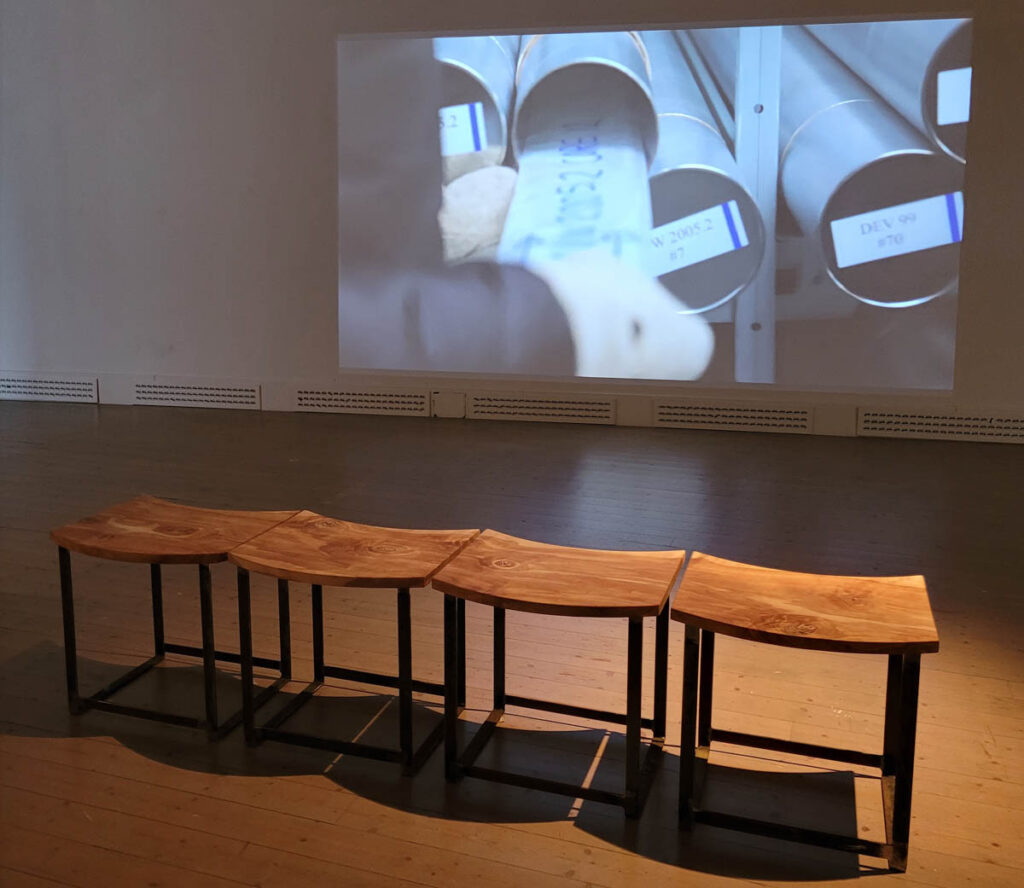
Lulebiennalen, bench of damaged birch (MADAM Snickeri made benches for works shown in the Lulebiennalen)
Thoughts from Christina Zetterlund, curator of the Luleå Biennial of Craft & Art.
During a viewing of the Fairy Tale Museum in Ljungby, the knowledgeable guide told about the recording of the fairy tales, about how they were cleared of “inappropriate content” before they were to be published. Tales that had been told between people in a context would now be printed and read by an audience that needed “appropriate” content. The tales were adapted to suit a modern bourgeois public, able to travel long distances from the place where they were formulated to become a commodity in modern society. Creating standards became an essential ingredient when raw materials were to become goods that could travel beyond their own place. This also included the forest, which would now go from being nature, being a forest, to becoming an industrial commodity.
In the book Rules and Hints for Sortering af Plankor, Battens och Bräder from 1888, it is stated that “For the timber industry it would undoubtedly be advantageous if uniformity could be achieved in the sorting of timber at all board yards”. That is, in order to make the forest a product that could be sold on a modern market, rules had to be created for what was the normative wood. The book gives a careful account of a normal quality and what is considered to be damaged, and thus unusable, wood. Through standardization, the “fine”, or “approved” wood, would be selected and become a commodity in an emerging timber market.
A wooden standard was created here that is still in use. A standard where the wood should not be natural but wood that looks and behaves in a certain way. The wood must be predictable so that we can build big and similar in the large-scale economy of industrialism. The sorting of the normative wood already takes place during felling. The non-normative therefore never begins to circulate in the economy of industrialism, but instead becomes wood chips or perhaps paper pulp. This means that for those of us who do not live in the forest but encounter wood through the furniture at work, the furniture store or perhaps at the hardware store, this is this form of wood that we encounter. The “natural”, the wood, is a result of the design of industrialism.
MADAME Carpentry and Restoration has its workshop at Ormestorp farm outside Söderköping. The farm runs a curious forestry. As part of the farm’s interest in the forest, they began many years ago to collect the wood that did not meet the standard. It was a wood that aroused MADAM’s curiosity and eventually led to an invitation to carry out a residency in collaboration between Virserum’s art gallery, the Lära om archivet project and Linnaeus University. Universities conduct a lot of research around the forest, but never with the craft as a point of departure. MADAM contributed with new perspectives on the forest.
Ormestorp farm was a prerequisite for the project, so that Madam would have access to the wood that industrialism’s efficient production sorted away. By being here in this place, opportunities were created to go beyond the strict rules of the system. Through knowledge of wood and questioning norms, MADAM here sheds light on industrialized wood, shows a system that creates the vast majority’s perception of wood, and perhaps even what is natural. But the investigation does not stop here at the demonstration, they create beautiful furniture from wood that the standard had not approved, the wood that neither suited the machines of industrialism nor the visual standards. MADAM’S furniture is solid down to the smallest detail, a well-made form that is a strong argument for the impermanence of standards. That they are norms that are constructed at a certain time for a certain need.
MADAM invites us to rethink beyond this norm and expands our visual imagination. At the same time, the project directs the searchlight towards other structures that industrial society shaped, other norms that hold our imaginary world.
About Christina Zetterlund
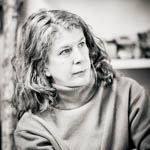
Christina Zetterlund is a Senior Lecturer at the Department of Design, Linneaus University, Sweden.
Exhibitions within the project, Tack Skogen!
Luleåbiennalen, 15/10 2022 – 15/1 2023.
Tack Skogen 2.0, Luleå konsthall i Luleå och Havremagasinet Länskonsthall Boden.
Virserums konsthall, 20/2 – 4/12 2022.
Tack Skogen 2.0, Skogstokig en vanföreställning om skador.
https://www.virserumskonsthall.com/press/pressmedelande-2022/
https://www.virserumskonsthall.com/konstutstallningar/fbclid=IwAR2whKy42eN3OXcBRVh9QMIipr7A3_zCE dJf5WLELsofeJo8gFmZ3itG-m0
https://laraomarkivet.se/kalender/skogstokig-en-vanforestallning-om-skador/
https://www.dagenshultsfred.se/nyheter/kultur/e/114034/sasongspremiar-med-start-pa-tra-2022-forsta-utstallningen-med-carolina-som-ny-chef/?desktop=true
https://vimmerbytidning.se/bli-prenumerant/artikel/jpop23kl
https://www.vaxjobladet.se/kultur/en-annan-blick-pa-traets-kvaliteter-805c2e4f/
https://nt.se/bli-prenumerant/artikel/jdw1g91r
Edgards på Lagnö
Tack Skogen 1.5, en utställning tillsammans med Katarina Bonnevier och Samuel Hartmann på Edgards på Lagnö, Söderköping.
Artist in Residence and scholarships and awards connected to Thank you forest
TACK Skogen 1.0 – 2.0, during the years 2011- 2022:
Field artists and project members, in MYCKET’s Trollsyn i hartmarkerna – artistic research that expands our imagination, An interdisciplinary design project that grows out of the mire in southern Sweden. Through site-specific crafts and video animations inspired by fairy tales and mythology, the project aims to expand the formal field used to create sustainable future scenarios. Design (Faculty of Arts and Humanities, Linnaeus University) 2021-ongoing.
Field artists at Virserum’s art gallery (Fältkonstnärer Virserums konsthall) with the associated exhibition “Thank you forest 2.0 – 10 injuries, 10 products”. 2021- ongoing.
https://lnu.se/forskning/forskningsprojekt/projekt-trollsyn-i-hjartmarkerna/
https://mycket.org/Troll-Perceptions-in-The-Heartlands-artistic-research-to-widen-our
Artist in Residence Linné – Linnaeus University, Thank you forest 2.0 in the project Learn about the archive “The learning archive” with the associated seminar week, Linnaeus University 2020-2021.
The committee for home crafts, project grant 2021, Tack skogen 2.0, 10 injuries, 10 products: Bark borer. 3
Ulf K Nordenson’s foundation for wooden crafts, for documentation and publication of Tack skogen 2.0, 10 injuries, 10 products. A practical research study of timber standards.
Tord Kempe’s work scholarship, Söderköping Municipality
“Furniture carpenter/decorator Marie Carlsson and furniture conservator/furniture restorer Magdalena Marano, in the craft collaboration MADAM carpentry & furniture restoration, receive the scholarship for their great professional skill, creativity and commitment to ecological conversion, for further work with design, art and interior design.” Söderköping 2020, (see page 20).
Carl Malmsten Furniture Studies honorary scholarship” For all your (Marie Carlsson) care to make students and the college happy at the school and for your work in creating a workshop Thank you Forest that became part of the introductory course.” Sthlm, 2013.
Gösta Edströms Honorary Fund, “Thank you forest: To air dry wood – a manual, a study of air drying single logs. In collaboration with Adam Gustafsson, 2013,
Carl Malmstens Handverkstiftelse, Scholarship for the development and implementation of the workshop Tack skogen: Touch Wood. 2011.
Collaborators and special thanks to: the forest, Ormstorp farm, Mycket (Mariana Alves Silva), Katarina Bonnevier, Therese Kristansson), Christina Zetterlund, Vårdinge village folhögskola, Anna-Carin Andersson, Magnus & Marina Ringvall. Forest professionals Johan Bergström and Samuel Hartman. Photographer Myra Wippler. STUDIO Myra.
About MADAM snickeri
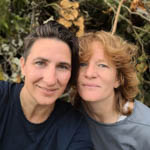 MADAM snickeri & möbelrestaurering (MADAM carpentry & furniture restoration) is a craft collaboration between the cabinetmaker and découpeur Marie Carlsson and the furniture conservator Magdalena Marano. We started working together already during our education at Malmstens Linköping University. The year after we graduated from the school in 2013, we founded MADAM carpentry & restoration, which works for many different clients, always with a focus on sustainability. Visit www.madamsnickeri.se and follow @madamsnickeri.
MADAM snickeri & möbelrestaurering (MADAM carpentry & furniture restoration) is a craft collaboration between the cabinetmaker and découpeur Marie Carlsson and the furniture conservator Magdalena Marano. We started working together already during our education at Malmstens Linköping University. The year after we graduated from the school in 2013, we founded MADAM carpentry & restoration, which works for many different clients, always with a focus on sustainability. Visit www.madamsnickeri.se and follow @madamsnickeri.



